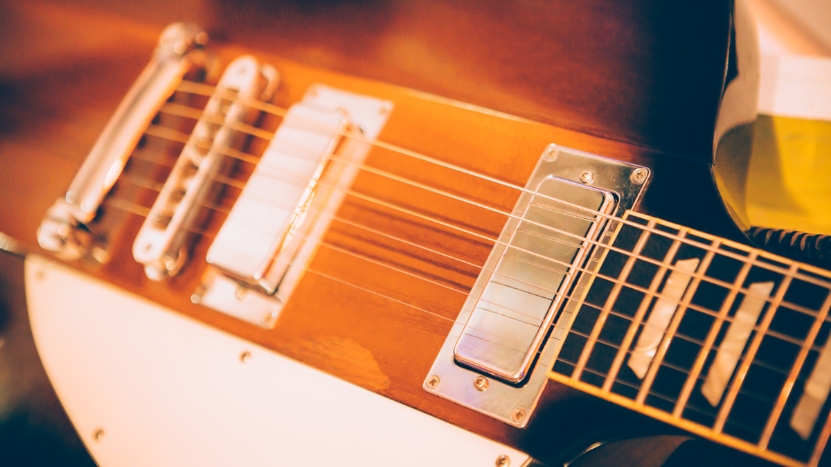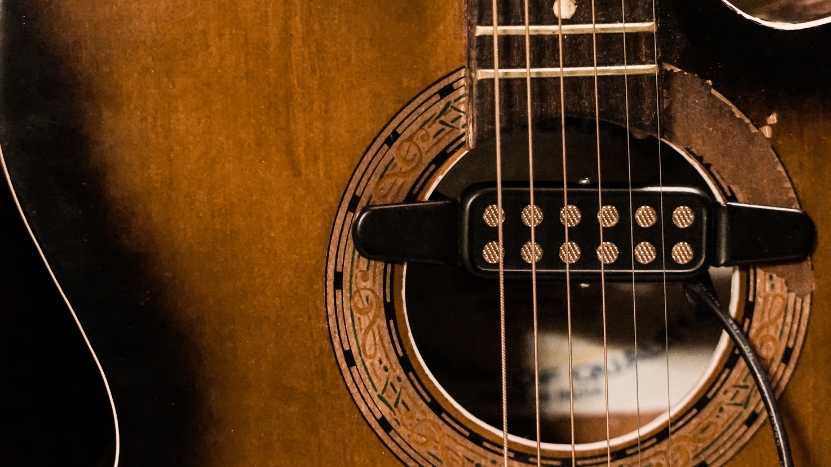The right pickup for your acoustic guitar depends on your playing style, performance needs, and budget.
Piezo pickups work best for live stage use due to feedback resistance, soundhole pickups offer a quick plug-and-play option with a warm tone, and internal microphone systems are ideal for studio-quality recordings but require careful handling to avoid feedback.
If you’ve ever tried to amplify your acoustic guitar and found the sound boxy, brittle, or just not true to what you hear unplugged, you’re not alone.
Guitar pickups for acoustics aren’t one-size-fits-all. Each type has its sound profile, feedback tolerance, installation method, and cost.
Whether you’re a solo singer-songwriter playing coffee shops or a touring guitarist plugging into massive PA systems, the pickup you choose should match your real-world needs, not just what sounds good on paper.
Types of Acoustic Guitar Pickups and Their Core Differences
| Pickup Type | Sound Profile | Best Use Case | Feedback Resistance | Price Range |
| Piezo (Under-Saddle) | Bright, crisp, focused | Live performance, full bands | High | $$ – $$$ |
| Magnetic (Soundhole) | Warm, round, electric-like | Easy plug-in, solo acts | Moderate | $ – $$ |
| Internal Microphone | Natural, airy, studio-like | Studio recording, solo acoustic | Low (needs EQ) | $$ – $$$$ |
| Dual/Hybrid Systems | Blended and customizable | Pro-level flexibility | Varies | $$$ – $$$$ |
| Contact Transducer | Woodier, percussive | Fingerstyle, tapping | Low to Moderate | $ – $$ |
Piezo Pickups: Best for Live Stage Use
Piezo pickups sit under the saddle of your guitar and capture the vibration of the strings and top plate directly.
These are the most common pickups in built-in systems because of their clean, feedback-resistant signal and reliable performance in loud environments.
What You’ll Notice
- Bright, sometimes “quacky” tone if not EQ’d properly
- Great string separation and clarity
- Doesn’t pick up much body noise
Soundhole Pickups: The Plug-and-Play Choice
View this post on Instagram
Magnetic soundhole pickups work similarly to electric guitar pickups. They fit directly into the soundhole and are typically easy to install without modification.
They give a warm, rounded sound with a touch of electric-guitar flavor, which many solo performers find appealing.
What You’ll Notice
- Warm, mid-heavy tone
- Easy to install or remove
- Minimal body resonance capture
Internal Microphones: Studio-Quality Sound, But Demanding
Internal microphones are placed inside the guitar body and capture air movement rather than just string vibration.
This results in a much more natural, ambient sound, ideal for studio work or intimate solo performances.
What You’ll Notice
- Very natural, “what you hear is what you get” tone
- Sensitive to body movements and handling noise
- Highly prone to feedback in loud settings
Dual Systems: The Best of Both Worlds

Some systems combine a piezo with a mic or a contact pickup with a magnetic source. These setups let you blend tone sources for more depth and control.
However, they can be more expensive and require a preamp or blending system.
What You’ll Notice
- Deep control over tone and feel
- Requires understanding gain staging and EQ
- Can mimic studio tones in live settings
Contact Pickups: Great for Percussive Styles
Contact transducers, like the K&K Pure Mini, stick directly to the body (usually under the bridge plate inside the guitar) and pick up the wood’s vibrations.
They capture the body resonance well and work particularly well for fingerstyle or percussive playing.
What You’ll Notice
- Earthy, percussive tone
- Excellent body tap response
- May need an external preamp for the best tone
Important Factors to Consider When Choosing a Pickup
Factor
What to Think About
Your Playing Style
Are you strumming hard, playing fingerstyle, tapping, or performing with a band? Different pickups handle different styles better.
Performance Setting
Quiet rooms vs. loud stages vs. recording studios, each needs a different feedback tolerance and tone profile.
Budget
Basic magnetic pickups start around $50, but dual systems can cost $400+. Think long-term value.
Installation Preference
Some pickups are easy to install yourself. Others may need professional help or even drilling.
EQ and Tone Control
Some systems include built-in EQ and volume. Others rely on external preamps.
Should You Use a Preamp?
@guitar_wood_store Guitar preamp installation,how to convert acoustic guitsr to semi acoustic,electric #guitarpreamp #semiacousticguitar #guitarpickup #guitarwood #guitar ♬ original sound – Guitar wood store
If your pickup signal is weak, overly harsh, or prone to feedback, an acoustic guitar preamp can make a world of difference. A good preamp not only boosts the signal but also allows you to EQ your tone on the fly, cut problem frequencies, and balance blended systems.
When a Preamp Helps Most
- You’re using passive piezo or contact pickups
- You’re performing live and need quick tone shaping
- You’re blending two sources (like mic + piezo)
Popular Acoustic Pickup Brands to Know
Brand
Known For
Fishman
Industry standard under-saddle and dual systems
LR Baggs
Studio-level tone with mic and blend options
K&K Sound
Popular with fingerstyle players for natural tone
Seymour Duncan
High-quality magnetic soundhole pickups
Dean Markley
Affordable, easy-install pickups
Final Thought

Don’t just chase the most expensive or complex option; choose the pickup that suits your real playing situation. If you’re busking or playing gigs every week, a piezo or magnetic pickup with a solid preamp may be all you need.
If you’re recording or playing intricate solo arrangements, an internal mic or dual system could give you the realism you’re after. And if you’re tuning a baritone guitar down to B or even A, make sure your pickup handles lower frequencies cleanly without muddiness.
Think of your pickup not just as a utility, but as part of your instrument’s voice. The best choice is the one that makes your acoustic sound as full, rich, and you as possible, whether through a PA, in a studio, or someone’s headphones.

